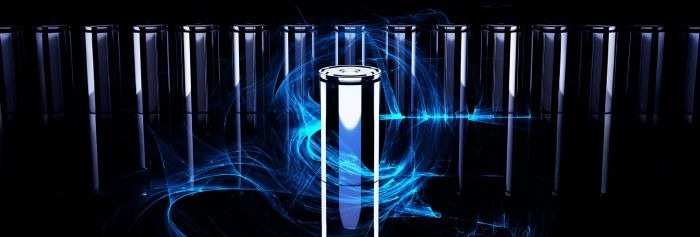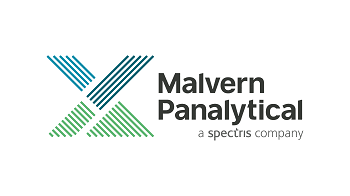Batteries play a critical role in the shift to cleaner energy, which puts intense pressure on manufacturers to ramp up production. To maintain consistent quality, producers rely on elemental analysis to track key materials—like nickel, manganese, and cobalt (NMC)—either in raw inputs or throughout the production process.

Image Credit: Malvern Panalytical
But as demand accelerates, how can elemental analysis keep pace with the increased throughput?
In many sectors, manufacturers turn to one of two main techniques: inductively coupled plasma (ICP) spectroscopy or X-ray fluorescence (XRF). Keep reading to learn why ICP may struggle in high-throughput settings—and how XRF offers a more efficient, scalable alternative.
Overview: XRF vs. ICP
- XRF (X-ray fluorescence):
- XRF is a non-destructive technique for determining the elemental composition of solid, liquid, or powdered materials.
- It does not require frequent calibration and is simple to run and maintain.
- It is especially useful for in-line quality control in battery production because of its speed, simplicity, and ability to test a wide variety of components and concentrations with minimal sample preparation.
- ICP (Inductively Coupled Plasma spectroscopy):
- ICP is a destructive elemental analysis method that involves dissolving samples in acid for examination.
- ICP requires frequent calibrations and the flow of gases such as Argon.
- ICP is known for its high sensitivity and precision, making it ideal for measuring trace elements. However, the long time it takes for samples to dissolve and the care required by a specialized operator when handling the harsh acids make it unsuitable for in-line quality monitoring.
The main distinction between ICP and XRF for battery elemental composition analysis is the sample preparation requirements. XRF has a longer feedback loop and requires a specialist operator, while ICP has a shorter feedback loop.
When both procedures are examined closely, significant variations in three areas can be observed: equipment calibration, analytical speed and automation, and cost-effectiveness.
The Strengths of XRF Instrument Calibration
XRF is fundamentally a comparative technique, meaning it relies on calibration standards to deliver accurate results. The instrument measures samples relative to these standards, allowing for precise identification of trace elements—even in unknown materials.
In battery cathode manufacturing, a wide calibration range is especially valuable, as it ensures accurate analysis across a variety of sample types.
Malvern Panalytical uses certified reference materials (CRMs) as calibration standards. However, with only one commercial CRM available for NMC compositions, the company has developed its own calibration kit using synthetic reference materials. These are produced in Malvern Panalytical’s ISO-accredited facility in the UK.
A key advantage of XRF is its long-term stability—once calibrated with high-quality standards, the instrument can maintain accuracy for months or even years with minimal need for drift correction.
In contrast, ICP typically requires narrow calibration ranges to enhance accuracy at specific concentration levels. It also demands frequent recalibrations—often weekly—as well as regular drift corrections. This makes ICP significantly more labor-intensive, particularly in high-throughput environments where efficiency and uptime are critical.
XRF’s Speed and Automation
ICP requires extensive and careful sample preparation, often involving hazardous chemicals like sulfuric acid and hydrofluoric acid. As a result, ICP instruments are typically limited to off-line laboratory use. While ICP is known for its precision, the complexity and safety requirements make it less practical for on-site analysis in production environments.
In contrast, XRF instruments are well-suited for on-site use in both battery production and recycling. For example, the Epsilon 4’s compact benchtop format and robust design make it easy to install near the process line, enabling operators to analyze samples quickly, easily, and with minimal preparation.
For applications requiring higher precision, samples can be prepared as fused beads using lithium borate fusion. The Eagon 2 automatic fusion machine completes this process in just 30 minutes, adding minimal time to the workflow while significantly improving analytical accuracy.
For liquid-phase processes, XRF can even be integrated directly into the production line using the Epsilon Xflow. This allows operators to obtain real-time data on process parameters, helping reduce waste and improve product quality through data-driven decision-making.
XRF: A Cost-Effective Solution
The simplicity and long-term stability of XRF calibrations make it a cost-effective option. With fewer maintenance requirements and greater weekly uptime than ICP, XRF systems offer clear operational advantages.
One of the most significant cost benefits is the ease of use: while ICP systems typically require trained specialists to handle complex and hazardous sample preparation, XRF instruments do not—reducing both staffing needs and safety concerns.
For the fast-paced battery manufacturing industry, XRF stands out as the more versatile, economical, and efficient choice.
Acknowledgments
Produced from materials originally authored by Umesh Tiwari from Malvern Panalytical.

This information has been sourced, reviewed and adapted from materials provided by Malvern Panalytical.
For more information on this source, please visit Malvern Panalytical.